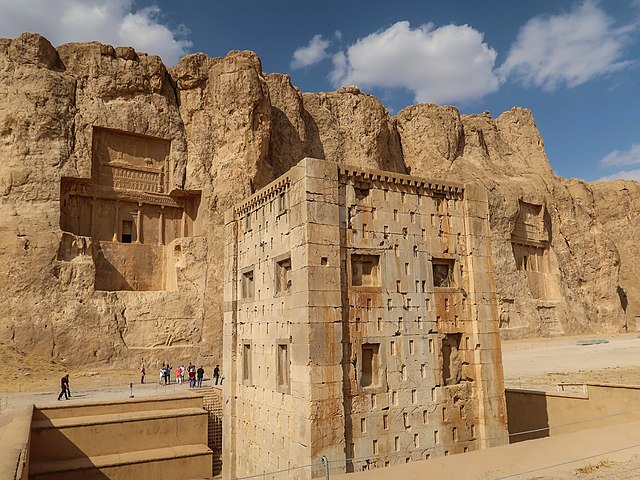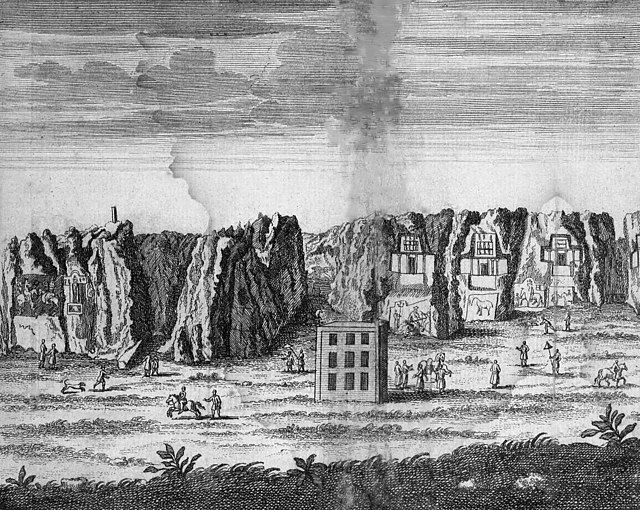Naqsh-e Rostam is an ancient archeological site and necropolis located about 13 km northwest of Persepolis, in Fars Province, Iran. A collection of ancient Iranian rock reliefs are cut into the face of the mountain and the mountain contains the final resting place of four Achaemenid kings, notably king Darius the Great and his son, Xerxes. This site is of great significance to the history of Iran and to Iranians, as it contains various archeological sites carved into the rock wall through time for more than a millennium from the Elamites and Achaemenids to Sassanians. It lies a few hundred meters from Naqsh-e Rajab, with a further four Sassanid rock reliefs, three celebrating kings and one a high priest.
Naqsh-e Rostam
Panorama of Naqsh-e Rostam. Rock carved tombs from left to right: Darius II, Artaxerxes II, Darius the Great, Xerxes I.
Upper register of the Achaemenid Tomb of Xerxes I
A 17th-century drawing of Naqsh e Rostam, by Jean Chardin
Rostam or Rustam is a legendary hero in Persian mythology, the son of Zāl and Rudaba, whose life and work was immortalized by the 10th-century Persian poet Ferdowsi in the Shahnameh, or Epic of Kings, which contains pre-Islamic Iranian folklore and history. However, the roots of the narrative date much earlier.
Rostam mourning Sohrab. Persian miniature.
Rostam in the murals of Panjikent, 7-8th century CE. He is represented with an elongated skull, in the fashion of the Alchon Huns.
Rostam kills Esfandiyār. Medieval Persian miniature
Rostam and Kay Kavus in castle








